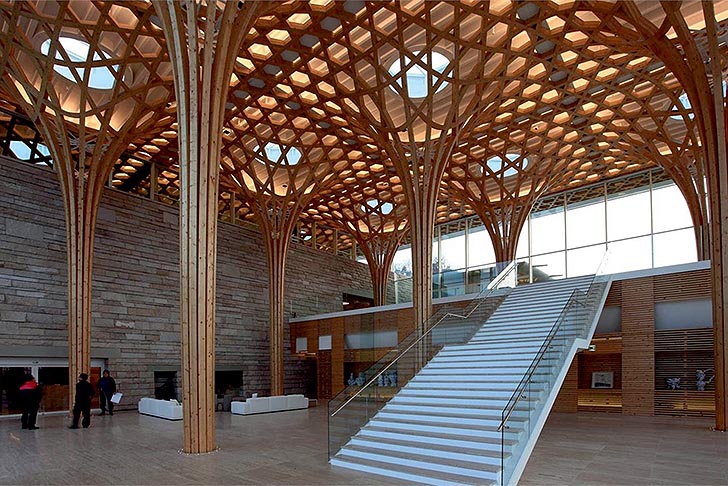You know the feeling. Its dark and you walk into a spider web. Within seconds you’ve touched every part of your body and beaten your hair into the latest hipster styling making sure you don’t have a spider on you. But even though that web is broken in places, it can repair itself and still function. What if synthesized versions of this product were used in the building materials in houses and bridges in high risk earthquake areas? What if this ‘biomimiced’ product was used in airplanes to repair damage itself?
Each year new innovations in building materials appear. This is one of the more interesting examples of the types of products current apprentices may end up working with one day in the building industry.
People have been looking at products produced naturally in the world for both inspiration and use in manufactured products for centuries. What if there was a material tougher than the material currently used to make Kevlar vests – those worn by the military and police to stop bullets? There is, and its part of the silk web made by a scary looking arachnid called the Darwin Spider.
A single silk strand of the Golden Orb Spiders web that is the thickness of a pencil has been calculated to stop a 747 in flight and a 2cm strand should be strong enough to repeatedly lift 2 metric tons according to the ‘Backyard Zoologist’. But how do you turn this naturally occurring product into something that can be used in building?
This is where the weird science becomes involved…
A start-up called Nexia Biotechnologies, in Canada was set up to produce BioSteel, a high-performance silk-like fibre made by cultivating recombinant proteins in the milk of transgenic goats. ”We take a single gene from a golden orb-weaving spider and put it into a goat egg. The idea is to make the goat secrete spider silk into its milk,” Turner told The New York Times in 2002.
Maybe the future of the building industry involves 3-D printing of precast panels that can self repair cracks that develop and withstand natural disasters?

As an interesting side note, take the scientific tinkering away and look back in history to see that everything old is new again, there is documented evidence that Australia’s Indigenous population has been using spider webs for such things as fishing line for centuries.

